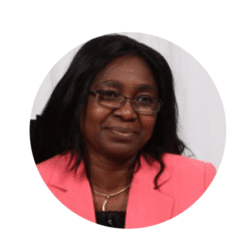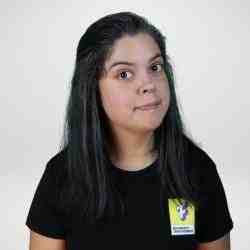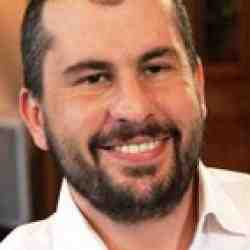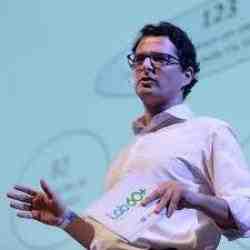Introduction
In order to enhance the quality of life and the security of disabled persons, Al Etmanski, who is based in Vancouver, B.C., is weaving a safety net that can withstand both the death of their care-giving parents and the unpredictable changes in government-funded support services. Its strength derives from secured networks of family and friends, increased financial independence, and avenues for true contribution and citizenship.
The New Idea
Increasing numbers of disabled people are living longer and the longevity means that many will outlive their parents. Al Etmanski addresses a concern that a steadily mounting number of parents live with: "What will happen to my son or daughter when I die?" He redirects that question to "What does it take to make a life–however long–a good life?" He offers a new way of thinking about disabilities and citizenship and new insight about how to remove the barriers to a good life. His idea helps replace parents' anxious isolation with planning that realistically contributes to their children's safety, both while the parents are still alive and after they die.
Relationships are the key. In Planned Lifetime Advocacy Network (PLAN), Al and his colleagues have created an infrastructure that systematically builds community, while dismantling the obstacles inherent in the social systems that control publicly funded services for the disabled. Al sees those systems as necessary and does not seek to replace them; rather, his work parallels the public bureaucracy and holds its feet to the fire by demonstrating what else needs to be done. For example, the Burnaby Association of Mentally Handicapped in Vancouver now pays for lifetime membership in PLAN for some people to whom it provides services. Al sees this relationship as "a good place for us." PLAN's ability to facilitate relationships for people who are isolated will continue to infiltrate bureaucracies and citizens' movements and a growing international constituency of families with disabled members.
The Problem
Disabled people and their families often confront a loneliness that can be more challenging than the disability in their daily lives and in planning for the future. Al says that his organization's work with families always "uncovers a wound" of fatigue and isolation. While parents and others know intuitively that what will best protect their disabled family members are trusting, caring relationships, they fear that no one other than themselves will care for their disabled loved one. Isolation and inaction prolong their anxiety and increase the risks for their children's future.
Estate planning can be costly, and at least partly for that reason, many parents of disabled children typically fail to do it. There are 16 million children and adults with disabilities in North America, but only a small fraction of their families have taken the steps necessary to protect them from an uncertain financial future. Demographic changes make this concern more acute as increasing numbers of disabled people are likely to outlive their parents. In the next decade close to six million families in North America will be caring for their aging relatives with a disability; the number of people over the age of 60 that have mental handicaps will double in both the U.S. and Canada by 2030.
The standard legal fallback provision for protecting a disabled person is guardianship. But, in the way that PLAN and the families that PLAN works with describe "a good life"–one that includes relationships, home, choice, contribution, and (sufficient) wealth–guardianship does not protect. On the contrary, it separates the guarded person from personal connection to those very qualities protection ought to afford. In the name of protection, such guardianship strips away one's rights and choices as a citizen. The legal process imposes an all-or-nothing judgment about the competence of the person who has a guardian–competence based on an intellectual standard: "I am human because I reason"–and overlooks other bases of competence and the contributions a disabled person can make to the larger society. Al places the legal structures related to disability and to guardianship in particular, in a historical context that includes vestiges of the eugenic belief that supported the separation of disabled people into institutions.
In the past, segregated institutions constituted a prominent social system for extending care beyond the resources of individual families. They are being progressively dismantled, but integration of disabled people into the community is unfinished work. Though friendship is the most direct antidote for loneliness, current support systems, which continue to be funded by public bureaucracies, are oriented to service provision, not to relationship development. Funding arrangements tie the hands of human service agencies and give little incentive to respond to the individual interests of their clients. It is in agencies' best interest to name the numerous disabilities individuals might have, pinpointing their disabilities rather than contributions they might make to society. The agencies' dependence on government funding makes them unpredictable guarantors of long-term well-being for disabled people. For many parents, the penny finally drops when they see budget cutbacks.
The Strategy
The first step for Al was to organize parents to pool their concerns and resources. PLAN was the vehicle.
One of PLAN's earliest breakthroughs was its shift from the question most parents came in with–"What will happen when I die?"–to distilling their insights about what makes a good life now and later. That refocus helped PLAN to synthesize what families were telling them and sort out the role various programs and services should have in the lives of relatives with disabilities. The answers, which shape PLAN's work, are relationships, home, choice, contribution, and (sufficient) wealth.
The need for estate planning remained, and Al has addressed it within the design of PLAN. While PLAN itself does no financial planning, it gives seminars to lawyers and financial planners on disability law, better preparing them to serve families with disabled relatives. And while PLAN does not receive a fee for referring parents to those lawyers and financial planners, it does charge a fee for the training, a win-win for all parties. Parents receive more informed advice, lawyers and financial planners tap a new customer base, and PLAN generates revenue. From the beginning, Al has been committed to being independent from government funding in order to press for change without fear of consequences and to avoid entanglement in the insecurity of government funds and all the conditions that are required to access them. PLAN does not require tithing from its members, but 60 percent of its operating budget currently comes from parents. Its self-reliance has forced it to be entrepreneurial–a challenge that Al sees as the hardest part for new groups who adopt PLAN's approach. He has built savvy bridges with business, gathering support from money to media coverage that reaches audiences PLAN's newsletter never could. For its part, PLAN offers corporations membership for their employees who have disabled family members as part of employee assistance programs. It also links businesses and professionals with the substantial market in the disability community–for products, legal services, and insurance.
Examination of a "good life" leads directly to the question of how to get there. Since relationships are central, PLAN developed its own strategy for forming what it calls Personal Networks. The networks were inspired by the "Joshua Committee" that began in Ontario in 1980 to break down the walls (hence the Joshua reference) between Judith Snow, who was then living in a wheelchair in an institution, and a full and active life in her community. PLAN contracts with facilitators with broad community connections to find people who share interests with the disabled person. The Personal Networks usually number about 10 people including some family members, who commit to be part of the disabled person's community for her lifetime, with PLAN's support when necessary as a guarantee. The networks have changed people's lives: a disabled person takes a first camping trip or enjoys walks or baseball games or just sitting with companions. One man grooms the horses of his network member. The impact extends to the nondisabled members of the network, who typically resist being labelled "volunteers," though they do volunteer their time.Some barriers require policy and institutional change. The most fundamental shift to date has been about guardianship, and Al's role in that legislative reform is suggestive of how he might approach the other obstacles he has already identified. In February 2000, British Colombia proclaimed laws that expand the legal definition of capability beyond intellect to include factors like an ability to show "feelings of approval and disapproval," or "demonstrate choice and preference," and to recognize trusting relationships as an alternative to guardianship. It opens critical new possibilities for people with disabilities. While an individual with intellectual disabilities could not, under this legislation, designate PLAN to act on her behalf, the law in effect gives legal status to members of Personal Networks whom she asks to act as her representative. No other jurisdiction that uses British Common Law has taken this step to legitimize relationships as an alternative to guardianship, though others are looking at it.
Al was one of the leaders throughout the long struggle to secure the legal change. He developed the proposal to fund it and was one of three people who formed the coalition to support it that included parents of sons and daughters with disabilities, people with HIV/AIDS whose partners often had no legal status to support their decisions, seniors who want their relationships of trust to be acknowledged without having to go to court to prove them, and even members of the Alzheimer's Society, who generally favor more rather than less legal protection.
PLAN's commitment to choice as a quality of a good life is directly related to its concept of citizenship and the limitations posed to it by guardianship for disabled persons. Al believes that citizenship will be the next focus for the disability movement, and he invites coalitions, groups, and individuals interested in constructing the definition of a citizen to join in the conversation in a new PLAN initiative, Philia, a Dialogue on Citizenship (www.philia.ca).
Al is also pursuing a shift from government block funding of agencies to funding on an individualized basis to families and disabled persons, thus increasing freedom of choice. If PLAN achieves this goal, will be creating new territory that people will be exploring for decades. Encouragement of policies and funding that would support home equity and co-op housing for disabled citizens is another part of PLAN's agenda, as are reforms in tax and trust regulations. Al wants the tax system to acknowledge the financial support families regularly offer their relatives with disabilities. He would like disabilities benefits moved from welfare departments, with their indelible stamp of dependency, to the pension apparatus of government. Further, in light of the demographics, Al anticipates a catalytic role for PLAN in an overdue conversation between policymakers for disabled persons and senior citizens.
PLAN is an idea whose time is now. In early 2002, its membership included more than 100 individuals and their families as full, lifetime members, each with a personal network that PLAN is committed to sustain for their lifetime. PLAN supports over 4,500 families in B.C. with advice and information. There are seven affiliated groups across Canada, one in the U.S., and conversations have begun with parent groups in Australia and the UK. Al receives many requests from groups both in B.C. and internationally to share the PLAN approach and travels frequently to spread the work and coach burgeoning groups.PLAN has defined the critical elements that it requires for others who want to use its name and approach. Replicas must maintain the core commitments to relationship, citizenship, self-sufficiency (independence from government funding), and family direction. Bylaws require parents to constitute more than 50 percent of each board of directors.
Two areas figure prominently in Al's vision of future impact and his own role in it. First, he sees enormous potential for parents to be economically empowered to negotiate with the federal service system by combining their financial resources. He envisions an investment pool combining the trust funds that a sizeable coalition of parents have set up for their children. A conservative estimate is that there are 5,000 such families in B.C. alone with a cumulative trust wealth in excess of $500 million. The pool would allow sharing of wealth with poorer families and allow the family lobby to approach policymakers, not on bended knee but as a partner with purchasing power. PLAN will not be a recipient of the funds but an advisor to trust and fund managers.
Second, Al sees PLAN as a prototype for other nonprofits in the future. On one hand, it offers a vibrant organizational example with its diversified funding, the social audit it has instituted to be sure it stays in line with its values, and its actively groomed leadership; it has seen two smooth transitions and has three-deep responsibility in most programs. On the other hand, it has programs that are applicable to interest groups outside the disability community. PLAN has been working with the aboriginal community, senior caregivers, and the brain-injured community; it has been asked to assist the mental health community; and the authors of a book to assist women with high-risk pregnancies have asked Al's permission to model their book after his two publications about PLAN's approach.
The Person
For as long as Al can remember, he has been uncovering the building blocks to social and economic justice. He believes that people can solve their own problems, that they have a "problem-solving muscle." The writings of Paulo Friere were instrumental in shaping his thinking in this regard. Al has also always wanted to help out, to be part of combining individuals' doing for themselves with all others' efforts. He looks back with pleasure on helping other students to read in grade school.
Al has a history of entrepreneurship right back to college. While at the University of Toronto, he quietly started a campaign at his small college to provide food aid and dollars to a desperate Biafra in 1967. He eventually grew the program to include all the individual colleges at the University of Toronto. Still a student, Al spent a summer working with Frontier College–Canada's oldest nonprofit organization–independently leading literacy training for mining laborers in one of Canada's most remote areas. His initiative and commitment to social justice were apparent early.
After several years as a successful social worker and community organizer, Al's work in the disability field began with the birth of his second daughter, Liz, who has Down's syndrome. The challenge of ensuring Liz's integration into school, work, and society highlighted for Al the attitudinal and structural barriers to full inclusion that exist, and the role his profession–social work–played in reinforcing those barriers.
Shortly after her birth, Al became executive director of a provincial advocacy association now known as the B.C. Association for Community Living and led both the desegregation and deinstitutionalization movements in British Colombia. After eight years of unrelenting and successful advocacy, he came to understand its limitations: even if all rights were immediately recognized, the challenge of finding better ways to live together and take care of each other would still remain.
His thinking crystallized further during a community planning meeting in a small B.C. town where he heard the only two disabled people in the room talk about what services they wanted. Not smaller group homes, more staff, or better service–but a parade where everyone could have a good time and someone to love and maybe to marry. He describes the experience as a transformative moment that drove home the knowledge that we all want the same things, joy and celebration, love and intimacy. That, in fact, "we are all in the same leaky rowboat together, and unless you belong you cannot contribute or be fulfilled."
It was this realization, coupled with the very real need for a community structure that could support disabled individuals in this period when they were outliving their parents and institutions were being dismantled, that led Al to create PLAN.
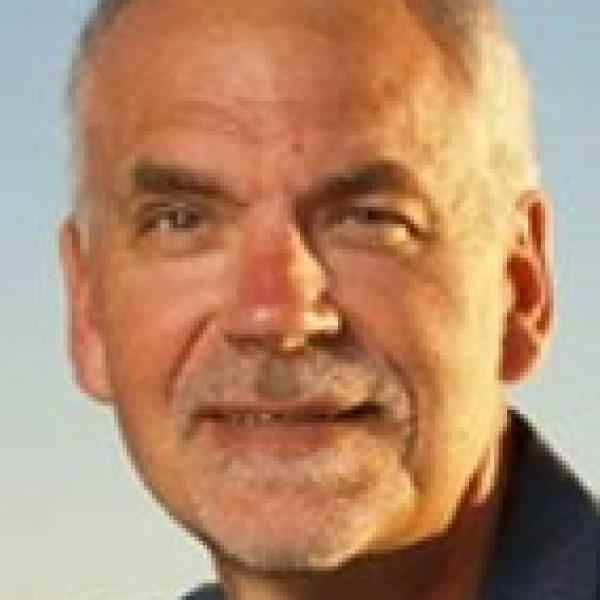
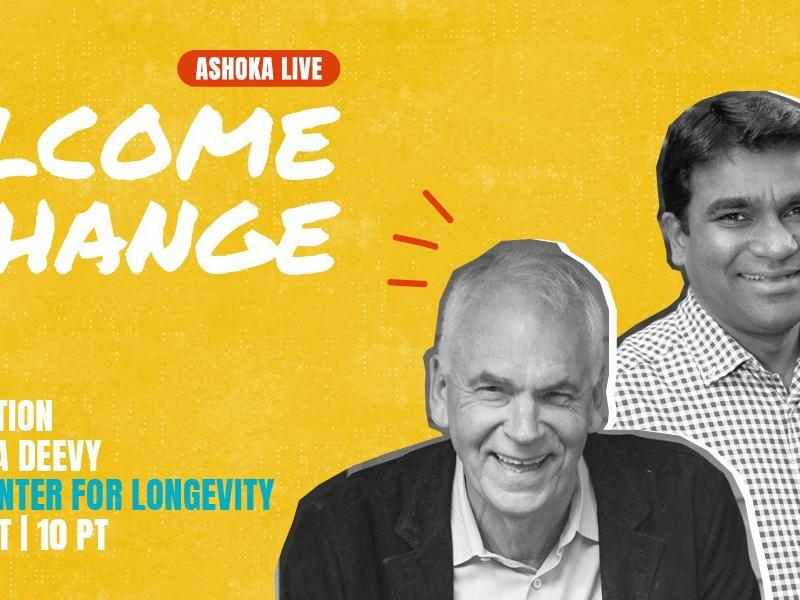 Tile image
Tile image